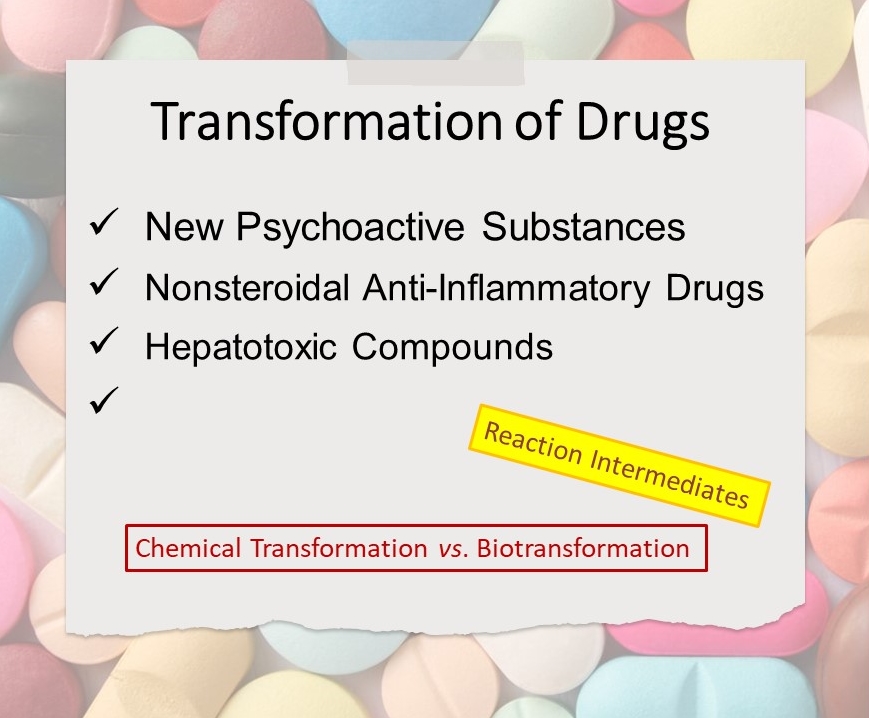Electron transfer in bioactive compounds and drugs
New psychoactive substances
New psychoactive substances (NPS) are investigated. Since the electron transfer is a part
of bioactivity or metabolism in organisms, the knowledge of a redox properties
can help to understand their activity, determination of the reaction scheme, the first reaction intermediates and final products.
Publications:
- Jirouskova, E., Cabala, R., Sokolova, R.:
Voltammetric study of new psychoactive substance 3-fluorophenmetrazine.
Electrochem. Sci Adv., , e2100223, pp.1-10 (2022).
Reduction of substituted derivatives of salicylic acid
Drug diflunisal, a synthetic difluorophenyl derivative of salicylic acid, belongs to the
nonsteroidal anti-inflammatory drug class (NSAID). Since the electron transfer is a part
of bioactivity or metabolism in organisms, the knowledge of a reductive degradation of drugs
is required.
Publications:
- Tiribilli, C., Sokolova, R., Giannarelli, S., Valasek, M.:
On reduction of the drug diflunisal in non-aqueous media.
Monatsh. Chem., 146, 807-812 (2015).
Radiosensitizers, magnetic resonance contrast agents
1/ Radiosensitizers are drugs that make cancer cells more sensitive to radiation therapy.
Eight nitrocompounds as metronidazole were chosen for electrochemical investigation and their futile reduction under aerobic conditions was studied.
2/ The electrochemical behaviour of europium complexes of potential MR imaging ligands was studied using several electrochemical methods. Agents as DTPA, DOTA, as well as newly developed ligands were used for complexation.
Publications:
- Gal, M., Kolivoska, V., Ambrova, M., Hives, J., Sokolova, R.:
Correlation of the first reduction potential of selected radiosensitizers determined by cyclic voltammetry with theoretical calculations.
Collect. Czech. Chem. Commun., 76, 937 (2011). - Gal, M., Kielar, F., Sokolova, R., Ramesova, S., Kolivoska, V.:
Electrochemical study of the Eu(III)/Eu(II) redox properties of complexes with potential MRI ligands.
Eur. J. Inorg. Chem., , 3217 (2013).

